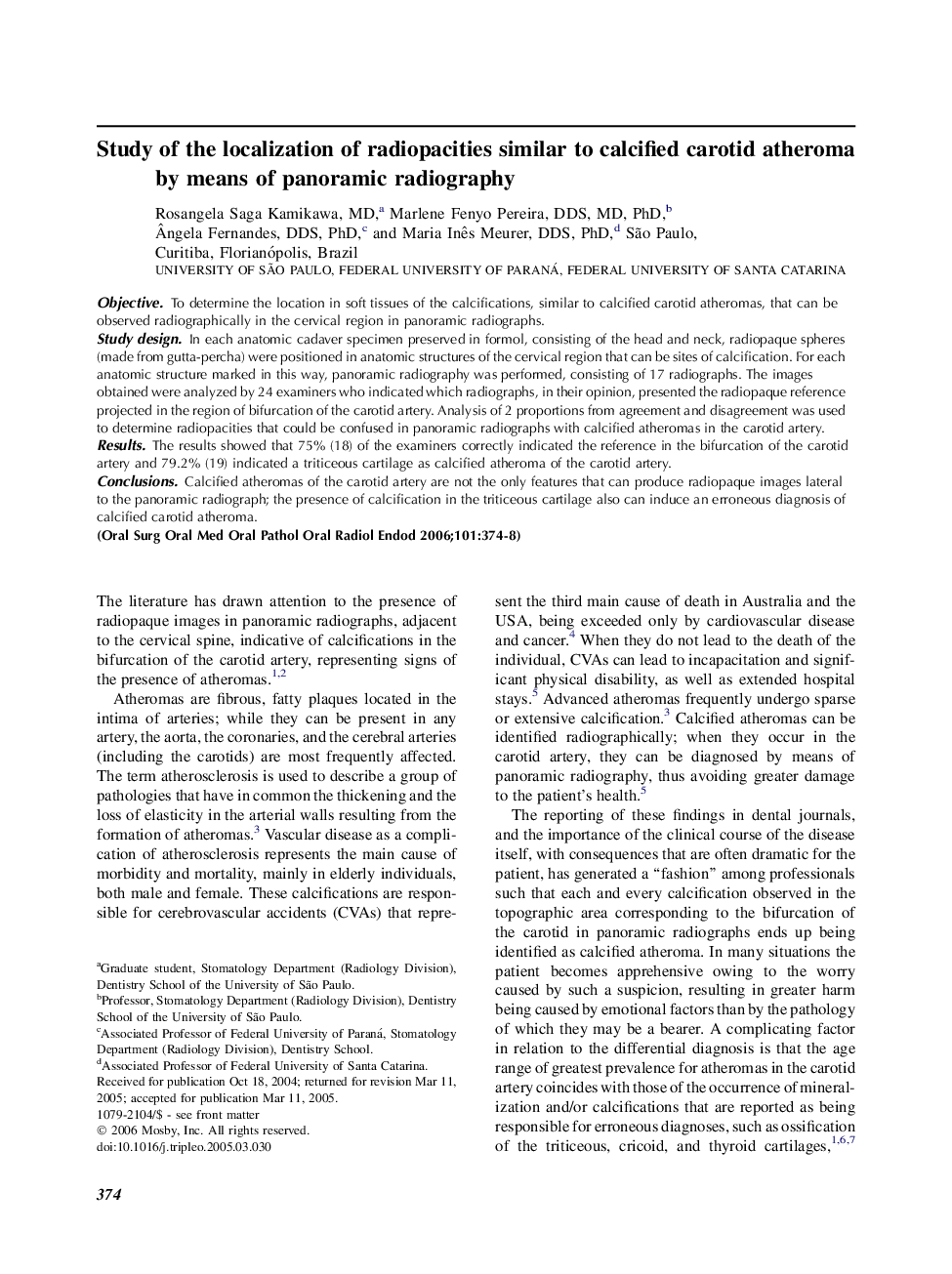| Article ID | Journal | Published Year | Pages | File Type |
|---|---|---|---|---|
| 3170136 | Oral Surgery, Oral Medicine, Oral Pathology, Oral Radiology, and Endodontology | 2006 | 5 Pages |
ObjectiveTo determine the location in soft tissues of the calcifications, similar to calcified carotid atheromas, that can be observed radiographically in the cervical region in panoramic radiographs.Study designIn each anatomic cadaver specimen preserved in formol, consisting of the head and neck, radiopaque spheres (made from gutta-percha) were positioned in anatomic structures of the cervical region that can be sites of calcification. For each anatomic structure marked in this way, panoramic radiography was performed, consisting of 17 radiographs. The images obtained were analyzed by 24 examiners who indicated which radiographs, in their opinion, presented the radiopaque reference projected in the region of bifurcation of the carotid artery. Analysis of 2 proportions from agreement and disagreement was used to determine radiopacities that could be confused in panoramic radiographs with calcified atheromas in the carotid artery.ResultsThe results showed that 75% (18) of the examiners correctly indicated the reference in the bifurcation of the carotid artery and 79.2% (19) indicated a triticeous cartilage as calcified atheroma of the carotid artery.ConclusionsCalcified atheromas of the carotid artery are not the only features that can produce radiopaque images lateral to the panoramic radiograph; the presence of calcification in the triticeous cartilage also can induce an erroneous diagnosis of calcified carotid atheroma.
